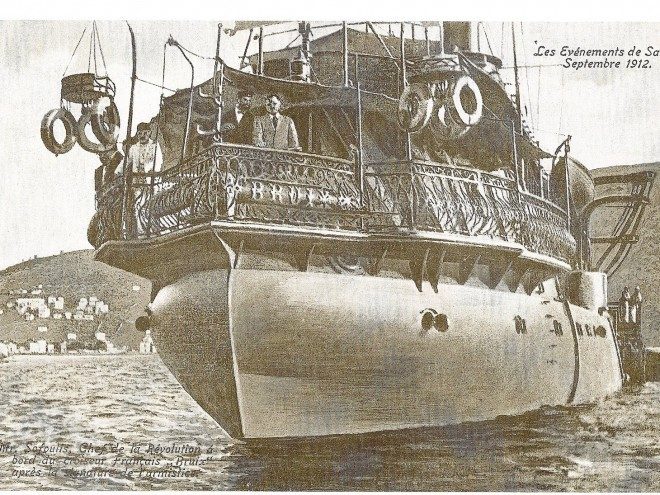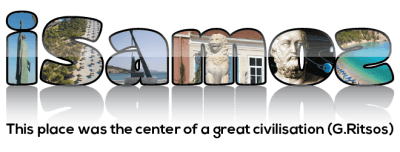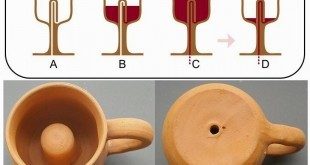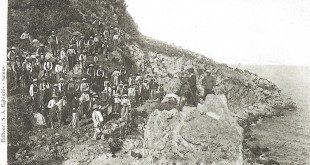Despite the fact that the island is located close to Turkey and is a long distance from Athens, the people of Samos were among the first to take an active part in the struggle against the Turkish rule. By regularly raiding the coasts of Asia Minor they made intense decoy attacks, thus aiding the Greek Revolution to a great extent. Samos was under the protection of the Greek fleet and thus could not be threatened by the Turks.
With Lykourgos Logothetis as leader, and the brave Captain Stamatis, the Turks were kept away for many years. Following the liberation of the Greek Nation however, the island remained beyond the boundaries of the newly formed Greek State. Nevertheless it became independent and autonomous. Despite the success of the people of Samos, in 1830 the Great Powers of the time decided that the island should be under Turkey with the consolation that it would maintain its autonomy. In this way the independent “Samos State” was established but for the following four years the people resisted and struggled to unite the Powers against the military threats of the Sultan.
Finally, in August 1834, a Hegemonic regime was violently enforced, the revolutionaries of Samos migrated to mainland Greece by the thousands while their leaders were deported as “Enemies of the State”.
In 1849 the people of Samos revolted against the Hegemonic government, ousted the authoritarian HegemonStephanos Vogorides and demanded the implementation of the “Organizational Charta”.
This marked the onset of a long period of the re-establishment of social life on the island of Samos. The gradual evolution of the regime is distinguished by the reinforcement of institutions such as the “constitutional republic” (whose dominant body was the annual General Assembly of the agent generals), by the reconstruction of judicial authority, by a Municipal administration, by a national budget, by the organization of a satisfactory system of education, the execution of public works, the set up of a network of telegraphic, telephone and sea communications, by the voting of Samian Political Adjective Law and by the introduction of Samian Civil Law.
The Hegemon who did great service to the island was Alexander Stephan Caratheodoris, a distinguished lawyer and mathematician who translated the works of Nassiruddin-el Toussy from Arabic which was published under the title “Traite du quadrilatere attribute a Nassiruddin-el Toussy, trdult par Alexandre Pasche Caratheodory (1891)”.
It seems that the science of Mathematics was his great interest which also connected him to his relative and great mathematician Constantine Stephen Caratheodori.
During the last quarter of the 19th century the economic and political prosperity on Samos was succeeded by cultural growth, with the printing of activist newspapers, the publication of important historical studies byEpaminontas and Nikolaos Stamatiadis, the social movement of the advocates of the “demotic language”, the translation of ancient Greek texts, the publication of poetic collections, the establishment of Philharmonic Companies, as well as the reception of Greek theatrical groups.
From 1851 onwards the basis for a more concrete autonomy for Samos was set. With the implementation of the analytical Charta of 1850, a new more permanent system of government began to evolve. Courthouses, notaries, registry offices, were organized. Schools were founded and the construction of public works and buildings began. The capital of the island was moved from Chora to the Port city of Vathi, which became the new and permanent capital. During the last quarter of the 19th century Samos experienced a remarkable economic and cultural development. Commerce, Shipping and Industry (especially in the sectors of leather tanning, tobacco and winery) flourished. Presses were established and books and newspapers were printed.
Great importance was also given to the development of education with the creation of schools in every village between 1851 and 1852, such as: The “Pythagorian Gymnasium”,the “Higher Girls School” from 1855, the “School of Commerce” in Karlovassi and the “Vocational School” in the capital.
In 1912 Themistoklis Sofoulis arrived on the island and with the help of the people ousted the Turkish forces and formed a temporary revolutionary government which was called “Unification of Samos with the Free Hellenic Kingdom”.
A year later, in 1913, the Greek fleet raises the national flag on the island. Since then the fortunes of the island follow those of the Greek State. Though the Hegemonic regime had dissatisfied the residents, the island enjoyed prosperity and the commercial, financial, cultural and intellectual sectors. The incorporation of the island into the broad Hellenic State resulted in its further development and prosperity.

 iSamos.gr Η ενημερωτική σελίδα της Σάμου! Εξερευνήστε τη Σάμο, τις παραλίες της, τη φύση της, τις ομορφιές της. Διαβάστε την ιστορία της Σάμου
iSamos.gr Η ενημερωτική σελίδα της Σάμου! Εξερευνήστε τη Σάμο, τις παραλίες της, τη φύση της, τις ομορφιές της. Διαβάστε την ιστορία της Σάμου





